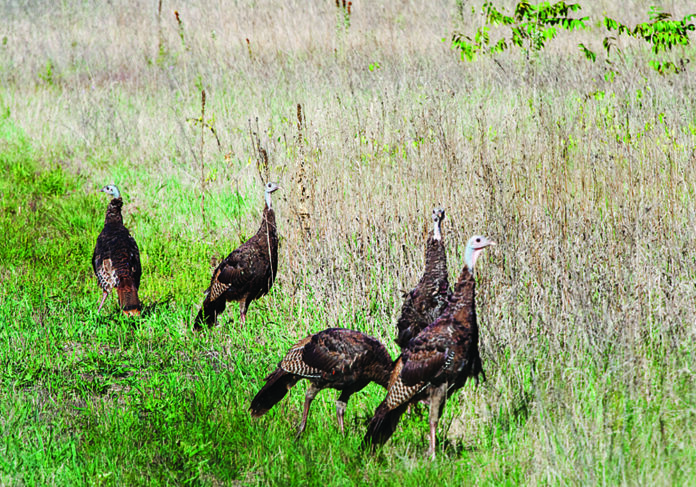Most serious wild turkey hunters have already claimed their first bird of the spring hunting season and some have carried a second gobbler home. Still, others are holding out for a larger trophy, calling birds for less experienced hunters, or don’t have any more call-off time left at work.
And speaking of the rest of us? Nothing yet. Hey, stuff happens. No blame here, just that mishaps do occur. A bone-chilling morning, a cloudy or windy front moved in shutting the gobbling off, or some other hunter found your honey hole and snuck in to claim his or her prize.
Here’s what we know about the gobblers as we approach the second half. Big old gobblers don’t get to be big old gobblers by being careless. Jakes are really stupid, two-year-olds are less stupid, but old Boss gobblers, although love-struck, are for the most part, anything but stupid.
Consider this: a wild turkey chick is on the mind of every predator in the woods. Once out of the shell, baby turkeys are easy pick’ns for fox, coyotes and feral cats, as well as flying predators. The hatchlings can’t fly and, well, they are plentiful.
On the watch
The hen is on the watch 24-7, watching out for trouble and quick to scatter her young ones to safety. As feathers grow, so do the chances for survival because young turkeys can soon fly up to tree branches and out of the reach of many predators.
Indeed, wild turkeys, if they are to reach adulthood, learn to stay out of the way of trouble and that means danger in the form of apparent threats or even possible threats. They may seem smart but they are simply the survivors, the wariest of the brood.
A most interesting characteristic of wild turkeys is their ingrained and reliable way to stay out of danger’s way. They run or fly from anything they see, hear or feel that could even remotely be a threat. Unlike deer, wild turkeys never stop and look back. They run, fly or simply sneak away. And that’s our lesson as we plan for and approach the second half.
Time to think
So what did we with a tag still in our pocket do wrong? Maybe we called too much. Maybe we moved too quickly because we didn’t keep the conversation going between our constant yelps and an interested gobbler — didn’t give him time to come into sight. Maybe we moved ever so little. Maybe we expected an interested gobbler to do something he won’t do, like approach us through heavy briars or leave live hens for our inviting calls, or fall for a trap after he has already heard every poor caller who has tried to entice him.
Like I said, stuff happens. Need more? Try roosting a gobbler. Roosting means to locate a bird that has flown up for the night. Most gobblers will continue to respond to noises just before dark. And most gobblers will still be in the same tree come sunrise.
Be diligent throughout the morning and even later as the legal hours for hunting become longer. Gobblers involved with a harem of agreeable hens will be looking for additional lovers as those hens move back to their nests.
That means that he will be more willing to be attracted to a skilled caller. Spring gobbler hunting is a most interesting, exciting and challenging big game hunt available to Ohio hunters. But be aware, it is addicting.












